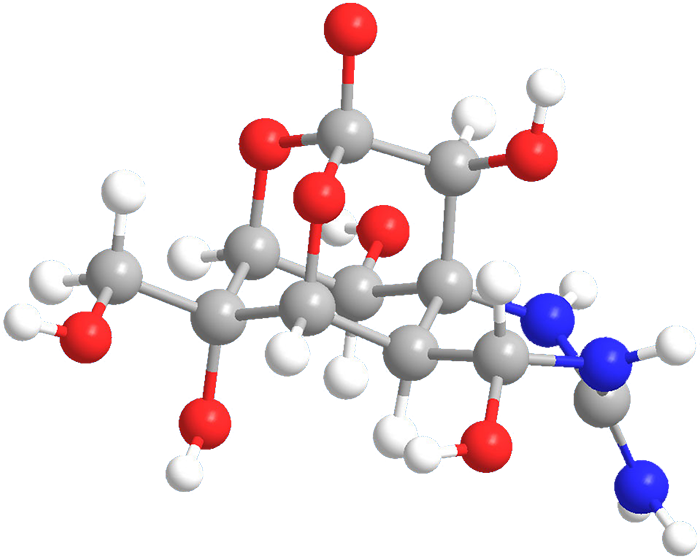

Tetrodotoxin is one of the most poisonous substances known—it’s 100 times more lethal than KCN. Its name comes from Tetraodontiformes, the order of fish that includes pufferfish (fugu), porcupinefish, and triggerfish. Tetrodotoxin is produced by bacteria in the organs of these fish and other marine animals. The total synthesis of racemic tetrodotoxin was achieved by Y. Kishi and co-workers in 1972. In 2003, M. Isobe et al. and J. Du Bois et al. reported asymmetric total syntheses by very different methods.
MOTW update: September 27, 2021
Tetrodotoxin is an extremely toxic natural substance—the poisonous principle in pufferfish and other marine animals. Tetrodotoxin, a nerve blocker, has been tested as a local anesthetic, but its concentration range must be limited to prevent it from becoming systemically toxic. It is not used currently for clinical purposes.
Anesthesiologist Daniel S. Kohane and his team at Boston Children’s Hospital and Harvard Medical School developed a self-assembling drug delivery system that releases the nerve-blocker more slowly and with less toxicity than direct injection. In experiments with rats, they used modified versions of peptides from the same voltage-gated sodium channels that tetrodotoxin targets to deliver the drug. The slower release allowed the toxin to block the rats’ sciatic nerves >3 times as long as free tetrodotoxin, without harmful effects.

Learn more about this molecule from CAS, the most authoritative and comprehensive source for chemical information.
Molecule of the Week needs your suggestions!
If your favorite molecule is not in our archive, please send us a message. The molecule can be notable for its current or historical importance or for any quirky reason. Thank you!
Stay Ahead of the Chemistry Curve
Learn how ACS can help you stay ahead in the world of chemistry.

